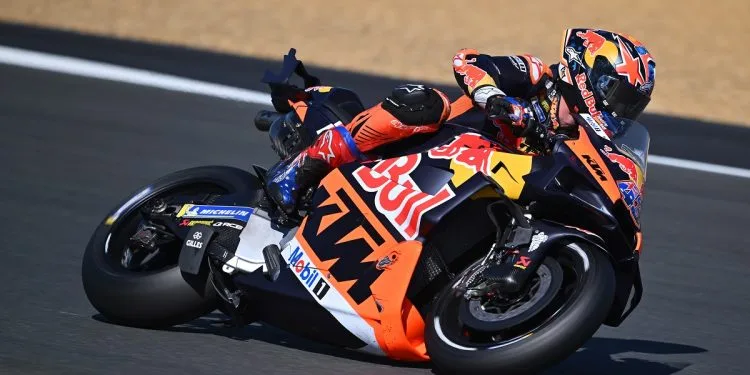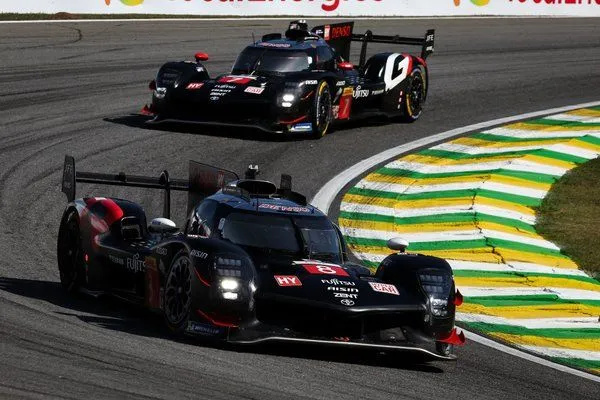Review: The 2022 Audi RS 3 makes its home on the track

With electric cars beginning to arrive in greater numbers, the number of vehicles that can achieve high speeds with great quickness only continues to grow. However, there is a shortage of fun cars, cars that delight the driver and stir the soul. The 2022 Audi RS 3 tries to fill that role. Everything that’s changed about it, from the expressive styling, to the unique 5-cylinder exhaust note, to its mechanical changes, seems to be in the name of fun. It’s by no means a perfect car, with some very apparent flaws, but at its core it’s rollicking fun in many ways.
I traveled to Nevada’s Spring Mountain Motorsports Ranch to get a sampling of the new RS 3 in several of those disciplines: on track, on the street, and even on a short, lighted drifting course after dark.
No, I did not forget how to count. The numbers above refer to the firing sequence of the RS 3’s 2.5-liter turbo-5 that gives it its unique sound. With the TT RS departing last year, this leaves the RS 3 as the only car to carry the 5-cylinder banner going forward.
The engine is a delight. It makes 401 hp and 369 lb-ft of torque, an increase of 7 hp and 15 lb-ft over the last RS 3 (and 7 hp more than the European version of the RS 3). It’s mated to a 7-speed dual-clutch automatic transmission and all-wheel drive.
Audi quotes a 0-60 mph time of 3.6 seconds and that definitely feels achievable with launch control, but where the engine shines most is between 20 mph and 50 mph. The turbo-5 is a bit old-school in its power delivery. There’s definite lag but once the engine starts to wind out it kicks very hard with engaging suddenness. The transmission sometimes works as an impediment to power. If left to its own devices, it doesn’t kick down early enough under braking. Also, sometimes when using the paddle shifters to try to downshift, the transmission won’t kick down until there’s a bit of a gap below redline. But if you use the paddles early enough, the RS 3 slingshots out of corners leaving burbles and grins in its wake.
2022 Audi RS 3
Rear-wheel feel, with an all-wheel safety net
The modest increase in power isn't what makes the RS 3 feel so much different than the previous car. It’s the other big mechanical change: a new electronically-controlled rear differential, which also gives the RS 3 a unique feel compared to other Audis. It’s mechanically identical to the one found in the new Golf R, but instead of only sending 50% of the engine’s power to the rear wheels, the RS 3 can send all of it, and all of that power can be shifted to the left or right rear wheel.
In Dynamic mode, the RS 3 sends as much power as it can to the rear wheels, and this is a fun mode for the street. It provides most of the feel of a rear-wheel drive sedan, and it was my mode of choice on the windy desert roads in California’s Death Valley. The RS 3 trends slightly toward oversteer in this mode, in sharp contrast to the other RS models which have a slight understeer bias.
Audi also adds a new RS Drift mode that I got to test on a small drift course at night. In this mode, with the traction control dialed all the way back, it’s almost absurdly easy to get the back of the car to step out and perform donuts or long sustained slides through a wide corner (without shifting out of first gear).
The differential shines most on the track in RS Performance mode. In this mode, the all-wheel drive system is set up to minimize both understeer and oversteer for faster and more stable cornering. That almost sounds too good to be true, but it’s amazing to experience. The solution to feeling the car step out in either direction is just to stay on the throttle and let the RS 3 figure things out.
Coming out of Spring Mountain’s long straightaway, there’s a tight 90-degree right-hand turn, followed by a slight right that opens into an uphill climb through a small, off-camber chicane. After my first set of laps, I asked Audi’s professional instructor if the way to take the back part of this sector was flat out and he assured me that “if you stay on it, the car can handle it.”
I appreciated the way he subtly dodged an assessment of my own talents and put the onus on the car, so on the next set of laps I did just that. I felt the nose of the car begin to push slightly as I arced right into the chicane with the road banked back to the left. The throttle was pinned and instead of understeer, the differential worked its magic and I felt the shift in power at the rear end get the nose pointed back to the right (without any additional steering input), which helped me blast up the hill 15 mph faster than I did the previous lap.
This wouldn’t happen in a purely RWD vehicle as getting on the throttle like that with the car unbalanced would cause a spin. There’s an argument that AWD dilutes the purity of the driving experience, especially in the track environment, but this is better to me. I’ll take the RS 3’s mostly rear-drive feel, but it adds the security blanket of AWD to cover up faults and provide maximum grip.
2022 Audi RS 3
The new suspension also helps the RS 3 to put its power down cleanly in those situations. For 2022, Audi Magnetic Ride has been ditched for a dynamic chassis control (DCC) system and a ground clearance that’s 0.4 inch lower than the S3. Sensors measure how the body is moving vertically in relation to the wheels and in RS performance mode, the suspension works to minimize wheel bounce and keep the body level over being very stiff at all times. In practice, this makes the RS 3 feel a bit softer in the corners than some other performance sedans. It has noticeable body roll, but the wheels never hop and the powertrain is so good at shuffling torque around that the lean bleeds away as you get hard onto the throttle.
If the RS 3 had an on-track weakness, it was the brakes. They had plenty of stopping power but the nose of the RS 3 tended to get a little bit squirrely under very hard braking (likely due to the RS 3's 59:41 weight distribution). The upside is that this part of the car's nature gets you to brake earlier and take a late apex, allowing the powertrain to shine as it rams through the extended corner exit.
2022 Audi RS 3
Put on your dancing shoes
It’s impossible to discuss the RS 3’s track performance without mentioning its new set of tires. For the first time on an RS model, Audi will offer a motorsport tire that’s really meant for the track: the Pirelli P Zero Trofeo R. Basically R-compound semi-slicks, these are the same tires that the RS 3 used in setting its compact car lap record of 7:40.748 at the Nürburgring.
In the dry 95-degree conditions of the Nevada desert, the tires were perfectly suited for Spring Mountain’s impeccable track surface; they are heroic and sticky in all the right ways. I drove the RS 3 on the track after doing the street drive on the Pirelli P Zero summer tire and the added grip proved transformative. It allows the RS 3 to put all of its power down so cleanly and the added bite makes turn-in feel crisp and quick.
Best of all, these tires are only a $450 option though they are only available if you also equip the Dynamic Plus and Black Optic Plus packages, which most importantly add carbon-ceramic front brakes and push the top speed from 155 mph to 180 mph. You’ll also owe Audi a signed disclosure that you know what you’re getting into with these tires as they are technically street legal, but we wouldn’t recommend treating them as such. They’ll have zero grip in the wet, so it’d be a good idea to own another set of wheels with a more appropriate day-to-day tire.
2022 Audi RS 3
Driving the RS 3 everyday
The RS 3s we tested on the street came sans the Trofeo Rs and the ceramic brakes, lowering the performance envelope noticeably. But this is still a performance vehicle first and foremost, and the RS 3 doesn’t let you forget that. The brake pedal is very grabby, eager to put in a lot of stopping power at the top of the pedal’s travel. Similar to the brakes, the suspension is also excitable and even in its Comfort setting still feels quite stiff. It’s busy, but thankfully not unlivable in the way that the old Audi TT RS was.
The 2022 RS 3 is also very, almost shockingly well equipped for its price. It starts at $59,995 (including a $1,095 destination charge) and comes with a 12.3-inch digital instrument cluster display, heated 8-way power front sport seats, nappa leather upholstery, panoramic sunroof, parking sensors, adaptive cruise control, and a 10.1-inch infotainment touchscreen with wireless Android Auto/Apple CarPlay. That feature density gives the base RS 3 something you don’t hear often in this space of high-performance luxury vehicles: value.
While the RS 3 isn’t a perfect vehicle, it’s an absolute riot on the track (with the Trofeo Rs) and still fun on the street with an exhilarating soundtrack to match. Perhaps automakers should chase delight instead of perfection. The 2022 RS 3 has that in spades.
Audi provided a flight, lodging at a house right on the racetrack, and track time for Motor Authority to bring you this first hand drive report.




.jpg)




.jpg)





.jpg)

.jpg)
